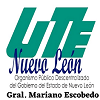Weighted Average of Outstanding Shares Definition and Calculation

A number of company activities can change its number of shares outstanding. It can issue a new round of stock in order to raise money for expansion. It can split its stock to reward its current investors and to make its price per share more tempting to new investors. It can reverse-split its stock to keep its head above water, artificially increasing its share price. It also may coincide with the conversion of stock options awarded to company outsiders into stock shares. The number of outstanding shares changes periodically as the company issues new shares or repurchases existing shares, splits its stock or reverse-splits it.
Restricted and Float

Whether potential shares are considered anti-dilutive depends on the period. Company A might post a loss in the first quarter, and report a diluted share count of 100 million — but post a profit for the year, with a diluted share count more than twice as high. In the US, public companies are obligated to report their number of shares outstanding as part of the SEC’s filing requirements. Changes in shares outstanding over time also reveal how valuable shares are as a stake of ownership in the company, as the number of shares available directly affects this. A recent example of a reverse stock split is General Electric’s (GE) 1-for-8 reverse stock split during the summer of 2021.
Weighted Average Shares vs. Shares Outstanding
These figures are generally packaged within the investor relations sections of their websites, or on local stock exchange websites. Outstanding shares play a crucial role in determining a company’s market capitalization, a key metric for investors assessing a firm’s overall value. The market cap is calculated by multiplying the current market price per share by the total number of outstanding shares. This metric provides investors with insights into a company’s size and relative importance within the market. A company may authorize buying back some of its own shares in the market if they believe that the market is undervaluing them and there is enough cash on the balance sheet to do so. In this case, the number of shares outstanding for the firm decreases.
- Next, 336,620,000 shares were held in the company’s treasury at that time, so subtracting this from the number of issued shares means that Johnson & Johnson had 2,783,223,000 outstanding shares at the end of 2014.
- They are separate from treasury shares, which are held by the company itself.
- At the time, GE discussed plans to split into three companies and to divest from many businesses.
- Increasing treasury shares will always result in decreases and vice-versa.
- Shares outstanding are the current number of those shares that aren’t treasury shares.
Weighted Average of Outstanding Shares
The weighted average shares outstanding, or the weighted average of outstanding shares, takes into consideration any changes in the number of outstanding shares over a specific reporting period. In effect, it weights any change in the number of shares outstanding according to the length of time that change was in effect. But the concept of outstanding shares is a outstanding shares formula bit more complicated than it seems.
Outstanding vs. issued vs. float

This is a figure calculated by the company itself; investors literally do not have the access to the data required. Typically, a stock split occurs when a company is aiming to reduce the price of its shares. When this takes place, a company’s outstanding shares increase, and a higher degree of liquidity results. By contrast, a reverse stock split occurs when a company seeks to elevate its share price. Often, a company does this to meet listing requirements, which often require a minimum share price.
AccountingTools

Outstanding shares refers to shares that are currently in circulation. It includes shares held by the general public and restricted shares that are owned by company officers and insiders. In certain cases, notably for companies that are aggressively issuing shares or debt, public data should be augmented with a reading of SEC QuickBooks filings. But for mature companies with relatively little movement in share count (either basic or diluted), quarterly and annual data from public sources should easily suffice for solid fundamental analysis. Understanding how to calculate outstanding shares for a public company would appear to be a simple matter.
- It is essential to note that outstanding shares can fluctuate due to events such as stock buybacks or secondary offerings.
- They determined that reducing their share count from nearly 8.8 billion to roughly 1.1 billion better aligned with this vision (1).
- The weighted average shares outstanding, or the weighted average of outstanding shares, takes into consideration any changes in the number of outstanding shares over a specific reporting period.
- A company that announces a 2-1 stock split as of a certain date doubles its number of shares outstanding on that date.
- A reverse stock split exchanges existing shares for a proportionately smaller number of new shares.
However, due to the fluctuations in share counts between reporting periods, the figure is typically expressed as a weighted average. Companies can also undergo a reverse stock split or share consolidation. Other companies may explicitly list their outstanding shares as a line item in the equity section of their balance sheet. Understanding how to calculate a weighted average can also be useful to individual investors who want to calculate their cost basis. The cost basis refers to the original purchase price of an asset or investment for tax purposes.
Stock Splits

And if there’s a difference between the number of shares issued and the number of shares outstanding — the difference is treasury stock. If your software doesn’t list it, or if you think it’s wrong, you can look at the company’s financial statements. The company balance sheet lists the number of outstanding shares along with the total authorized shares and total floating shares.
It helps in calculating key financial ratios and understanding the company’s ownership distribution. While outstanding shares determine a stock’s liquidity, the share float—shares available for public trading – plays a crucial role. A company with 100 million outstanding shares, but with 95 million held by insiders and institutions, will have a constrained float of only five million shares, impacting its liquidity. After initial public offerings or SPAC (special purpose acquisition company) mergers, pre-existing owners usually have “lock-up” requirements that prohibit selling for a period of time (usually at least 90 days).
